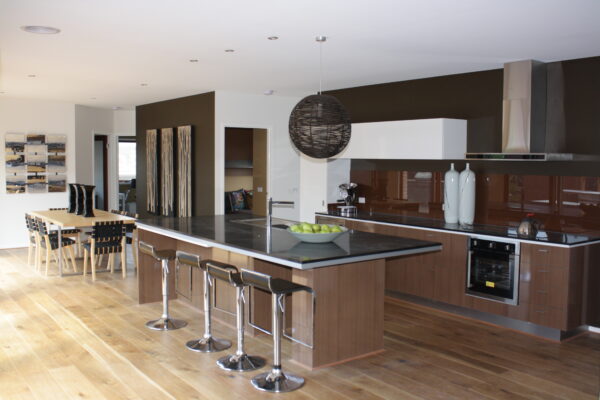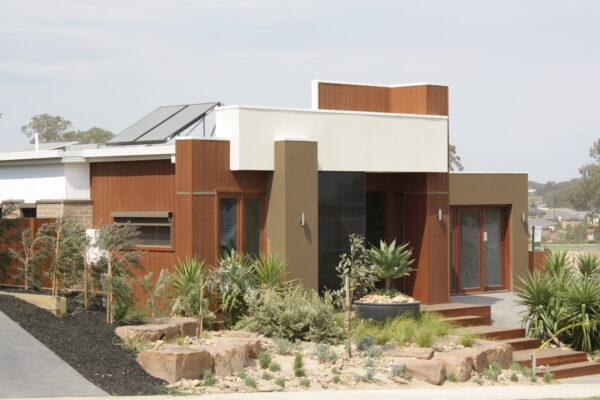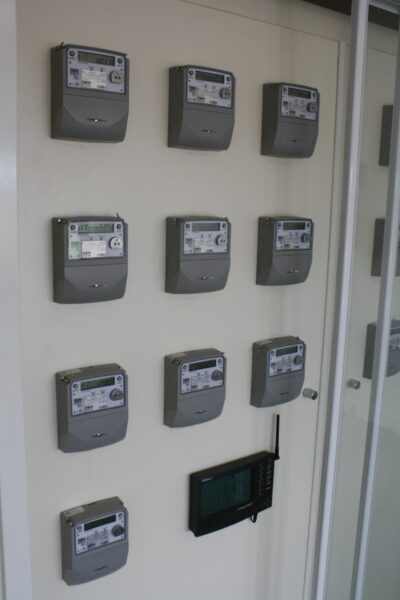Zeroing in on sustainable energy and emissions
CSIRO’s Zero Emission House, near Melbourne.
In previous posts, we have talked about the idea of ‘sustainable urban development’. To understand what that could mean at street level we are going to zero-in on some of the research that CSIRO and partners are doing in this area.
This week, we focus on CSIRO research in recent years for ‘houses or dwellings’, specifically the Zero Emission House project (AusZEH). This project was set up as a demonstration of how we could achieve a more sustainable and climate-friendly future.
Through this project, CSIRO and partners successfully overcame the challenge of designing and building the first affordable, net-zero emission house. This was tailored for Australia’s climate, lifestyle and the volume housing market.
The CSIRO team also developed new AusZEH Design software for designing new Australian houses or retrofitting existing houses for zero-emission outcomes. The software allows for different local climates and context, house features and household size and occupancy pattern.
The AusZEH arose out of an understanding that homes and buildings were producing about a quarter of Australia’s greenhouse gas (GHG) emissions. These emissions are due to a heavy reliance on mostly high emission electricity generation (such as coal-fired power) for heating, cooling, lighting and appliances.
“The essential aim of the project was to produce enough renewable ‘zero emission’ energy on site to supply all of the operating energy needs of a typical Australian household,” according to CSIRO’s AusZEH leader, Dr Greg Foliente.
Over the course of a year, a net-zero emission performance is achieved when the total onsite renewable energy production is the same as the total energy consumed by the residents.
The energy and emissions embodied in all the construction materials and technology used in the AusZEH house were also offset. This means that on completion in 2011, it was also the first house with net-zero lifecycle carbon emissions.

Energy efficient appliances, zero emissions and highly livable.
The demonstration house in Laurimar, 30 kilometres north of Melbourne CBD, achieved an eight-star energy efficiency rating and the net zero emission standard by using ‘off-the-shelf’ building and renewable energy generation technology and future-ready energy management systems, specifically:
- 6 kW roof -mounted solar panel array for electricity generation
- optimised building envelope design for the Victorian climate
- high-efficiency appliances
- smart meters and an integrated energy management and monitoring system
- high efficiency reverse cycle heating and cooling system
- high efficiency solar hot water system
- rainwater tanks for toilet flushing
- grey water recycling system
- a power charging system for an electric vehicle, the first Australian house to have this.
“We estimated that Australia would be able to avoid 63 million tons of GHG by adopting zero emission houses in all new housing developments over the decade up to 2020,” Dr Foliente said.
This emissions saving is equivalent to taking 13 million cars off the road for a year or closing 16 coal-fired power plants for a year. (US Dept of Energy greenhouse gas equivalencies calculator).
The team also developed a way of modelling the broader impacts of energy-efficient and zero-emissions technologies on building stock at a precinct, city, region or state scale.
Given data on population and housing stock growth and trends in consumption (appliances, lighting, hot water and heating/cooling), CSIRO can analyse the impacts of different actions and technologies on energy and carbon footprint scenarios for decades into the future.
With these modelling capabilities and new developments in renewable technologies and energy, there’s no reason why houses, and even an urban development like Ginninderra, could be a net energy producer while meeting the zero emission standard.
In the AusZEH house, CSIRO worked closely with industry partners Delfin-Lend Lease and Henley Property Group and a consortium of AusZEH partners.
Smart meters, part of an integrated energy management and monitoring system.
Smart meters, part of an integrated energy management and monitoring system.
Further reading:
The energy efficiency innovations providing new ways to reduce emissions, CSIRO blog
Unprecedented Global Alliance for Buildings and Construction to Combat Climate Change, UNFCCC


